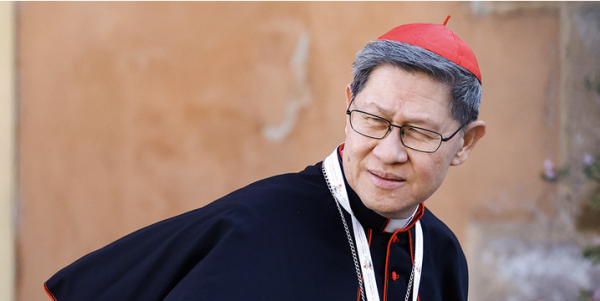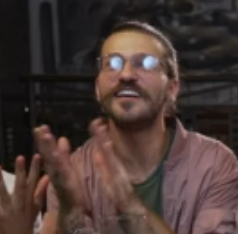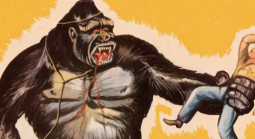Just Over $6 Million Bet on Next Pope at Kalshi
Something you thought you'd never read: This week's top betting market is on the next pope. But here we are.
Next Pope Favorites
BetUS and many of the internationally licensed online gambling sites were offering betting on the next pope. In fact, BetUS featured the pope link towards the top of its betting options. BetUS is available to those 18 and up in North America and throughout the world.
Most of the European bookmakers were also taking bets on the next pope, including Bet365, Unibet and Coral. BetWay and 888 appeared not to be. These sites are not accessible from the US.
And then there is Kalshi, the online prediction market that is taking the world by storm. They are available in most US states. Just over $8.2 million had been bet on the next pontiff as of Tuesday morning at that site. Like BetUS and other internationally licensed sites, Kalshi claims it is licensed and can operate in all US states. In the case of Kalshi, they are licensed by the Commodity Futures Trading Commission (CFTC).
Pietro Parolin and Luis Antonio Tagle are the front runners among the oddsmakers and gamblers alike. Each pays between $150 and $175 for every $100 bet at BetUS while 28% of gamblers like Parolin compared to 20% who were backing Tagle at Kalshi. The European bookmakers were offering more generous odds on Tagle compared to BetUS. Case in point, Coral had Tagle paying out $300 for every $100 bet.
Here are the current odds at BetUS (subject to change)
- Luis Antonio Tagle +150
- Pietro Parolin +175
- Peter Turkson +500
- Robert Sarah +1200
- Matteo Zuppi +600
- Peter Erdo +800
- Pierbattista Pizzaballa +800
- Fridolin Ambongo Besungu +1800
- Kevin Farrell +2500
- Jean-Marc Aveline +1400
- Robert Prevost +1500
- Francis Arinze +2200
How Long Will it Take to Select the Next Pope: When Will My Bet Be Graded?
If you placed you bet at Kalshi, the wait may be painful as grading might not happen for another ten years. That's assuming no pope chosen until 2035, which is highly unlikely.
Kalshi will settle bets per the following rule:
If Pietro Parolin becomes the first person elected Pope before Jan 1, 2035, then the market resolves to Yes. Sources from The New York Times, the Associated Press, Reuters, Axios, Politico, Semafor, The Information, The Washington Post, The Wall Street Journal, ABC, CBS, CNN, Fox News, and MSNBC.
The person elected must also accept the office. Note: this event is mutually exclusive.
It's indeed conceivable (though highly unlikely) that bets won't be graded for a few years.
In 1281, we didn't have an answer for three years. Improvements in technology do not appear to play a role in the selection process.
Here is how the process works, per CBS News:
The cardinals will have already discussed the merits of each papal prospect during days of "general congregations" at the Vatican before the conclave, but now the voting begins. Choosing the new pope requires not just a majority, but a two-thirds plus-one vote among the cardinal electors for a candidate to win. Pope Benedict XVI, who led the church prior to Francis, raised the threshold and enshrined the two-thirds requirement into church law two days before he stepped down.
Each cardinal must swear an oath of absolute secrecy before they vote. If they disclose any information from within the conclave they will be excommunicated by the church.
To vote, each cardinal writes their chosen candidate's name on a ballot, disguising his handwriting, then walks to an altar at the front of the chapel and deposits the paper onto a ceremonial plate. He then tips the ballot from the plate into a chalice-urn.
As they are counted and the handwritten entries recorded by three cardinals at the altar, known as scrutineers, the ballots are deposited into another urn.
A third urn, made of gilded bronze and silver and adorned with Christian imagery, is used to ferry ballots from any cardinals too ill to leave their sleeping quarters to the chapel for counting.
After the first vote is held on the first afternoon, the cardinals' ballots are placed into one of two small ovens inside the Sistine Chapel and burned. A plume of smoke flows up a chimney and into the air over St. Peter's Square, watched for eagerly by the faithful, and the world's media.
The papal conclave is scheduled to begin on Wednesday, May 7, 2025, in the Sistine Chapel at the Vatican.
It's indeed possible that there will be no immediate winner, in which case the process begins anew the next day (Thursday).
If there's no two-thirds majority after three days, voting is paused for a day followed by prayer and discussion.
Then the voting process resumes.
The reality is that recent conclaves have taken as little as 24 hours (Pope Francis is 2013).
Pope John Paul II needed eight ballots, over two days, to become the pontiff in 1978. His successor, Benedict XVI, was chosen on the fourth ballot, after two days, in 2005.
So if you are a gambler worried about a long wait to get paid, this shouldn't be an issue.
|
|
















